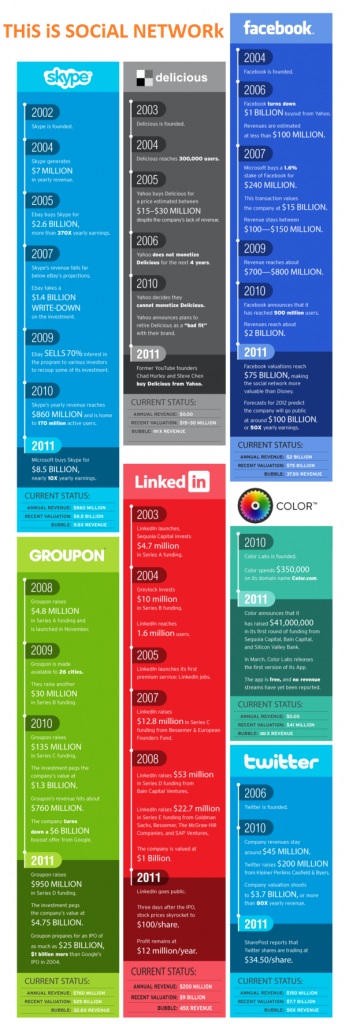Advice for small businesses on using social networking sites like Facebook and LinkedIn, and how to integrate these tools into the marketing and recruiting efforts of your company…
 Consider this: It wasn’t until 1997 that the Internet reached 50 million users in the United States. Facebook gained over 100 million users in the U.S. from January 2009 to January 2010, marking a 145 percent growth rate within one year, according to research by digital marketing agency iStrategy Labs. If you’re a business owner that hasn’t embraced social media networking as a major component of your success strategy, it’s due time to hop onboard.
Consider this: It wasn’t until 1997 that the Internet reached 50 million users in the United States. Facebook gained over 100 million users in the U.S. from January 2009 to January 2010, marking a 145 percent growth rate within one year, according to research by digital marketing agency iStrategy Labs. If you’re a business owner that hasn’t embraced social media networking as a major component of your success strategy, it’s due time to hop onboard.
“When you’ve got 300 million people on Facebook, that’s a huge business watering hole,†says Lon Safko, social media expert and co-author of The Social Media Bible: Tactics, Tools, and Strategies for Business Success, of the site’s global reach. “The profile is like an index to your company.â€
While Facebook has become the most popular social media site, there are plenty of others for your company to explore. LinkedIn, for example, houses 55 million professionals seeking jobs, employees, or basic business or networking opportunities. MySpace, which allows users to tinker with music, themes, and HTML code, is targeted toward youth and teens. All of these sites have one primary thing in common: the profile.
The user profile is generally what distinguishes social networking sites from other social media platforms. It helps set the stage for building relationships with people who share the same interests, activities, or personal contacts, as opposed to primarily disseminating or digesting information feeds. This also means social networks enable companies to invite audiences to get to know its brand in a way that traditional forms of marketing or advertising can’t.
But what, exactly, are the methods that businesses should use to effectively leverage the burgeoning userbase of these sites as a tool to grow their companies?
n now dis is wht i call SOCiAL NEtWORK… ; ]

